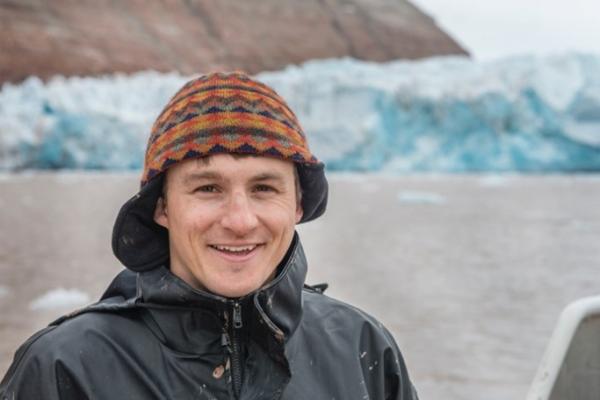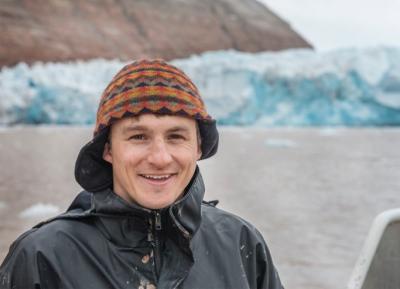New SES Professor Alex Michaud Studies Life in Frozen Places


I am excited to join OSU, the School of Earth Sciences, and Byrd Polar and Climate Research Center. My fascination with ice started at a very young age. I grew up in Minnesota and spent many days on frozen lakes ice fishing, skiing, or playing hockey. There is nothing more magical than a freshly frozen lake without snow. It’s like a giant aquarium. Seeing the fish and plants alive under the ice sparked an inner curiosity for how these organisms could survive the winter beneath the ice. Many years later, that curiosity for ice covered lakes motivated me to complete a PhD studying microbial life in a subglacial lake beneath the West Antarctic Ice Sheet. I moved to Denmark after my PhD for my first postdoc. There, I studied microbial activity in glacio-marine sediments within the fjords of Svalbard. My second postdoc was at the Bigelow Laboratory for Ocean Sciences where we were studying the microbial iron cycle in the Alaskan tundra.
My research interests are on the soft and squishy side of earth sciences, microbiology and biogeochemistry. I feel at home within the School of Earth Sciences because I am mainly interested in ecological changes of microorganisms in response to the loss of ice and how those ecological changes impact element cycles, whether that is lake ice melting, glacier and ice sheet retreat, or permafrost melting. Essentially, I ask questions that seek to explain how the large-scale changes in ice masses impact what and how microorganisms eat (organic carbon from the environment or fix their own carbon through autotrophic processes), breath (with and without oxygen), and poop (byproducts of their metabolism). Many of the metabolisms we measure involve carbon dioxide, methane, iron, and sulfur, all of which are important pieces of the global carbon cycle and its balance in the atmosphere. By measuring these processes in the face of changes to ice masses, we try to better understand how our climate will react to the loss of ice. A second objective is to better understand how life on earth has evolved to cope with the formation and melting of ice.
We primarily work in the Arctic and Antarctic, but two new projects seek to develop technology to study lake ice (NSF award #2322221) and lake geochemical changes (NSF award #2322281) during the understudied spring melt season. I just returned from Antarctica where I was the lead microbiologist on an International Continental Drilling Program project named the Sensitivity of the West Antarctic Ice Sheet to 2°C Warming (SWAIS2C; www.swais2c.aq/). The goal of the international project was to collect sea floor sediments from beneath the Ross Ice Shelf in Antarctica. Our target was sediment from the last interglacial periods when the world was warmer and the West Antarctic Ice Sheet was less extensive and possibly collapsed. Sedimentary records before and after the last interglacial sediments will provide clues as to how the West Antarctic Ice Sheet responded to a 2°C warmer world. These clues will help us predict how the West Antarctic Ice Sheet will respond to the warming we are currently experiencing. As a microbiologist on the project, I am keenly interested in how these last interglacial sediments (deposited during open marine conditions) differ from modern glacial diamict and if the last interglacial sediments provide food or other resources that helps to fuel contemporary microbial activity in the less nutrient-rich glacial diamict. The third project that I am really excited about continuing at SES and Byrd is studying microbial persistence in deep glacial ice. Seminal work at OSU and SES has shown microbial life can persist in glacial ice. It can’t be an easy feat to survive while buried in an ice sheet or glacial, yet some (many?) microorganisms do. How they survive is one of my main questions, but also can we use the community of microorganisms present in the ice to help inform our paleoclimate context for that time (NSF award #2228257).
Throughout all of these projects, it becomes clear that having earth science colleagues that also study glacier dynamics and hydrology, geochemistry, marine sediments, and paleoclimatology is important for my research. I look forward to learning from and working with my new colleagues in SES and Byrd! Prospective graduate or undergraduate students and postdocs who are interested in working on these projects are welcome to contact me. I am looking for curious scientists to join the group and help me continue the research.
